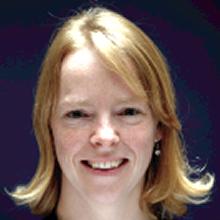Health Pop24/7: space-time specific population modelling for use in health and environment
Competitive studentships available. Population, Health and Wellbeing Group
This topic may be eligible for ESRC or Webscience DTC funding. Any DTC funding is not yet confirmed, but we would still welcome applications from interested candidates.
Supervisors Prof David Martin and Ms Samantha Cockings
An understanding of the links between the environment and health, whether at the local, national or global scale, requires accurate estimates of the geographical distribution of population over a range of temporal scales. For example, assessment of the population exposed to a specific environmental hazard ideally requires information about how population has moved throughout the relevant time period and when, where and for how long they were exposed to the environmental factor. However, most population data in countries such as the UK only records the night-time residential location of people e.g. their home address on census night or their home address as recorded by a survey. In reality, most people spend much of their time at other locations e.g. at work, at a retail or leisure venue, or travelling between such locations. Additionally, most population data are collected decennially and estimates are updated annually whereas, ideally, many environment and health applications require data for a higher temporal resolution e.g. hourly, daily, weekly or seasonal. This lack of space-time specificity in existing population data severely limits the ability to make causal inferences about the links between the environment and health and also hampers efforts to take appropriate policy decisions or to effectively and efficiently distribute resources to cope with environmental hazards.
Our ESRC-funded Pop24/7 project seeks to extend existing population surface modelling methods (originally developed by Prof David Martin and colleagues) to the creation of space-time population models. The Pop24/7 project, due to be completed in early 2011, will (i) develop a generalised and extensible framework for the spatio-temporal modelling of population, (ii) develop a new software tool, available for use by other researchers, which implements these models, (iii) validate and test the method using key geographically referenced data sources for 2001 and 2006 and (iv) publish a set of reference models of populations in England and Wales for key historical, cyclical and special event timescales, to be made available through a web interface.
This PhD project will extend and apply the models developed by Pop24/7 for use within the health sector, with an expected particular emphasis on links between the environment and health. The specific aims and deliverables for the project will be agreed between the student, external partner(s) and the academic supervisors, but are likely to include: (i) enhancement of the space-time population surface models for use in the health sector, (ii) linkage of the Pop24/7 space-time specific population surface models with models produced by environmental scientists, epidemiologists and social statisticians in order to estimate and predict population risk and vulnerability to environmental hazards, and (iii) evaluation and validation of the models using other ancillary datasets. This is an exciting opportunity for a student to carry out methodological research which will have a direct and demonstrable impact on real-world problems facing the global society.
The research student will join Southampton's Population, Health and Wellbeing (PHEW) research group. There are currently six full time PHEW academic staff (Prof. David Martin, Prof Graham Moon, Dr Kate Boyer, Samantha Cockings, Dr Geoff DeVerteuil and Dr Jim Wright). The group is home to the leading journal Health and Place and ESRC’s Census Programme and group members have held numerous current and recent research awards from funders such as ESRC, ONS and the health sector.
Candidates must have or expect to gain a First or strong Upper Second class degree in Geography, Environmental Science, Social Statistics or a related subject and/or a qualification in Public Health or Epidemiology. Details on how to apply are available from the Graduate School Administrator, School of Geography University of Southampton, SO17 1BJ, Telephone 023 8059 2216, fax 023 8059 3295, email J.A.Drewitt@soton.ac.uk . Informal enquiries may be made to Prof David Martin (Telephone 023 8059 3808 – email D.J.Martin @soton.ac.uk).
